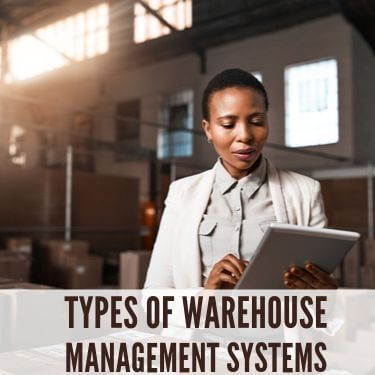
 Copy URL to Clipboard
Copy URL to Clipboard
Utilizing a Warehouse Management System is essential for any 3PL business dealing with physical goods or materials that must be transported to and from customers. Time is money, and you could be losing money if your employees don’t have an efficient system in place to manage warehouse operations. Determine which type of warehouse management system will work best for your business so you don’t fall behind on inventory control, picking and shipping with your orders.
There are several types of warehouse management systems to choose from to best fit your business needs. The most popular types that are used frequently by 3PL businesses are:
There are pros and cons to each type that will help determine which system is best for your business.
Table of Contents
 Strategic Sourcing Order Fulfillment R+L Global Logistics can be trusted to handle your warehousing and logistics needs. Our logistics team is dedicated to our customers and has the knowledge and experience to take care of your goods without any added stress on your end. We offer a personalized touch and competitive pricing for our services, which include: Domestic / International Truckload / LTL (Less than truckload) Air / Ground Expedite Packing / Crating / Packaging Warehousing / Storage 24/7 Live, On-Call Personnel Our logistics services are the ideal match for your logistics wants and requirements. Chat, email, or call us at 866-989-3082 to talk to an agent for more information on how we can assist you with your fulfillment needs." width="300" height="300" />What is a Warehouse Management System (WMS)?
Strategic Sourcing Order Fulfillment R+L Global Logistics can be trusted to handle your warehousing and logistics needs. Our logistics team is dedicated to our customers and has the knowledge and experience to take care of your goods without any added stress on your end. We offer a personalized touch and competitive pricing for our services, which include: Domestic / International Truckload / LTL (Less than truckload) Air / Ground Expedite Packing / Crating / Packaging Warehousing / Storage 24/7 Live, On-Call Personnel Our logistics services are the ideal match for your logistics wants and requirements. Chat, email, or call us at 866-989-3082 to talk to an agent for more information on how we can assist you with your fulfillment needs." width="300" height="300" />What is a Warehouse Management System (WMS)?A warehouse management system (WMS) is a software application that helps a business run its daily operations in a warehouse. A WMS has a large range of benefits that allow businesses to control and monitor warehouse operations such as when goods arrive and exit the warehouse. Other operations include inventory management (receiving, put-away, replenishment, slotting), picking and packing processes, auditing and shipping orders.
A WMS can help a business to lower operating costs by decreasing labor and space waste. Inventory control is a massive determinant in doing so. A good warehouse management system allows employees to view where an item of inventory is at any given time and location. It improves inventory tracking by using serial numbers, barcoding and RFID tags. These tracking tools then contribute to an organized inventory. Internal and external inventory transportation can be fully optimized through advanced inventory tracking functionality.
In addition to warehouse equipment operations, a WMS can help to manage supply chain operations by tracking goods from the manufacturer or wholesaler to the retailer or distributor, perform cycle count and monitor expiration dates. A warehouse management system greatly reduces the likelihood of an error occurring when shipping, allows a business to fulfill orders instantaneously and track ordered products within the warehouse. It leads to a paperless work environment while simultaneously directing employees on the best practices for warehouse management operations.
A warehouse system can be implemented in more than one way. It can be a standalone tool, used by itself or in conjunction with other tools, or can be part of an enterprise resource planning (ERP) system. In addition, a WMS is often integrated with an inventory management system or a transportation management system.
Warehouse inventory management systems have made many advancements in technology from where they started. A warehousing management system could originally only provide simple functions related to storage location. Now, a WMS sets the standards for warehouse operations by coordinating transactions between the inside and outside of the facility.
Warehouse management system benefits cannot be understated in the overall importance of operational warehouse logistics. There are many components of a WMS that you should consider if you’re trying to choose between different warehouse management systems.
GET A QUOTE
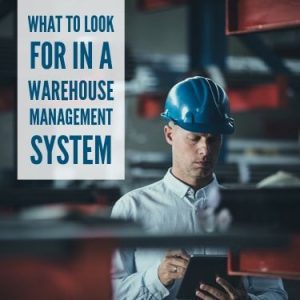 What to Look For in a Warehouse Management System
What to Look For in a Warehouse Management SystemHere are the most important requirements and key features of a warehouse management system that can be used to gauge which system is the right one for your business.
Functionality is a basic principle, but one of the most significant. Good warehouse management system software will maximize what you and your business can do while simultaneously minimizing the work that must be done. You want the WMS to streamline your business processes and measure data that you otherwise would have a hard time tracking.
For example, a WMS can determine employee productivity and track what assignments an employee has completed, and where the assignment was done. This will enable you to have direct visibility on how efficient, or inefficient, your workforce is in real time.
The easier a WMS is to use, the less time will be spent on employee training. You don’t want training time to be excessive in the first place, but especially not if a WMS system is fully integrated into your business and every position uses it at some point. A WMS that is well-designed will cut down on the time it takes employees to set up and monitor operations and thereby enable more time to adjust to an ongoing workflow.
This is extremely useful when it comes to new employees. New personnel can be up and running within hours, not weeks when a WMS is easy to learn. Clear navigation properties also mean that employees can fully utilize the warehouse management system for optimal performance.
You should look for a WMS menu and help screen that is easy to follow. Make sure the WMS allows the user to simplify data entry, create template reports and charts and has a dashboard view that provides the user with a single access point to all of their critical data. The dashboard view should also automatically update in real-time so employees are current on daily and hourly operations.
GET A QUOTE
You should be able to oversee everything from receiving to shipping. You want to have detailed information on everything every step of the way. That means products, employees and transactions but at the very minimum, your WMS should track:
You can then do a specialized analysis towards your warehouse operations as your WMS tracks everything (people, movement, products, etc.) happening in the warehouse. The specialized analysis will help you to hire smarter and be more efficient at stocking products, among other things.
A long-term, warehouse management system solution must be able to adapt to a growing company and scale itself towards future requirements. One criterion that will tell you if the WMS is scalable is if the system works with most ERPs. This is because your business may change ERP systems as it gets bigger and you don’t want to change your WMS every time your business is expanding!
Another closely related parameter is if the WMS is built to allow for use with future applications and operating systems. Like the ERP, you don’t want to be locked into a particular platform.
Flexibility also applies to hardware. A WMS should be compatible with other versions of the equipment listed below:
Lastly, check how flexible the WMS is towards different business sizes and types. A good WMS should have success with all sizes and types of industrial and wholesale distributors. A WMS is an investment in the future of your business so you need the WMS to be able to grow with you.
It’s not enough to just have data, you must be able to understand it to fully take advantage of the information. Metrics that track the performance of your warehouse operations are highly valued and are the most beneficial when the data can be presented accurately and efficiently.
You should be able to easily create reports and charts based on warehouse operations with your WMS. This includes real-time tracking of both employees and warehouse performance in organizational groups. Management can then compare the performance of groups of employees (morning/evening pickers, receiving, etc.) and geographical areas (east/west divisions, etc.). Furthermore, you want a warehouse management system that can measure individual employee performance against standards of speed and accuracy.
If you decide to integrate your WMS with an ERP, it’s essential that you choose a WMS that combines seamlessly with key ERP systems. This guarantees that the WMS and ERP work together in unison to keep your business running. Any WMS that you consider investing in should be totally compatible with your current ERP system. Additionally, the WMS vendor you are looking at should be able to develop supplemental ERP integrations.
Use customer references in order to get first-hand information on how well the warehouse management system works. You can ask for a list from the vendor and, if possible, meet with the customers alone and not with any of the vendor’s salespeople. You want the full story from the customer to find out how well the system performs. Questions to ask the current customers include:
The more customers you can speak with, the better picture you will get of the WMS. Ideally, you could see the WMS in action and see how it performs in certain situations. Keep in mind though that your business needs may be different from the customer reference you’re reviewing.
Price is an important factor in choosing a WMS, but there are many more factors that come into play when making a decision. One WMS may have a lower upfront cost but you should consider the long-term application as your business grows and develops. Other determinants to consider are:
You could end up regretting purchasing a WMS with a lower initial price tag if you have to spend money to fix issues caused by necessary integrations and customization requirements. The frugal price tag could end up costing more dollars in the long run, which is why you should consider the overall value and long-term implications of the WMS solution you choose.
Finally, a WMS vendor’s commitment to warehousing and logistics solutions will indicate if you should consider their product. Many WMS solutions span many different countries and cover various requirements which allow the vendors to diversify what they can offer you. However, this sometimes leads to restricted day-to-day insights and a niche scope of warehouse management.
To counteract this possibility, look at how often and thoroughly the vendor upgrades their warehouse management systems. A preferred vendor would solicit customer feedback, act quickly to take advantage of market changes and provide updates and upgrades for no cost.
GET A QUOTE
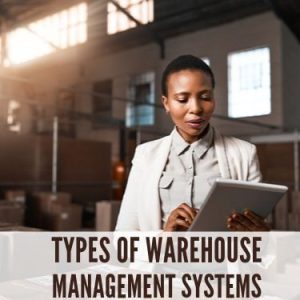 Types of Warehouse Management Systems
Types of Warehouse Management SystemsThere are four basic types of warehouse management systems that are commonly implemented by a 3PL business:
Many of the features are similar but the package and delivery style are what differentiates them.
Most WMS solutions have a variety of tools that can handle different components of a warehouse management system. The pros and cons of each should be weighed against what your business needs and may need in the future.
GET A QUOTE
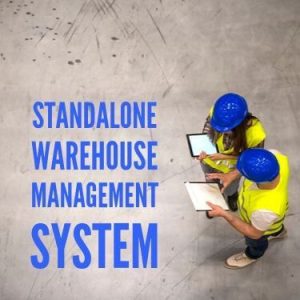 Standalone Warehouse Management System
Standalone Warehouse Management SystemA standalone WMS is often the lowest in price but also tends to lack many of the benefits from an integrated WMS solution. Standalone systems are the most basic and are only used for their warehouse management features. They are a typical on-premise type system that is used with the business’s original hardware and network.
Standalone systems are sold without any extra supply chain functions and instead only include the best and most important features of WMS modules. The two most important features are inventory management and warehouse operations. A business that decides on a standalone WMS can expect to have the following features:
Some vendors do offer the most sought after basic transportation management tools with their standalone system. However, most warehouse management systems are sold as standalone packages that are installed and then integrated with your current software. Integrating an external program with your ongoing software does work but frequently causes issues like duplicate data entry, information delays/silos, interface problems and extra expenses for customization.
A standalone warehouse management system can be used as an inventory management system. For that reason, it can be used with many fields outside of warehouse management. This feature makes a standalone WMS ideal for a small business or a business that doesn’t have a large software budget. However, other steps of the logistics chain are not incorporated and consequently, it may not integrate well with other types of business software like the WMS solutions given below.
GET A QUOTE
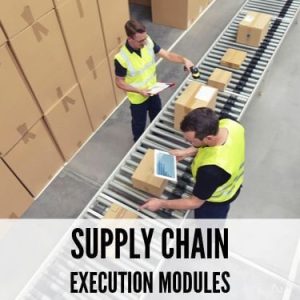 Supply Chain Execution Modules
Supply Chain Execution ModulesA warehouse management system can be considered a subcategory under supply chain management (SCM). SCM software has a broad scope by nature and can assist users to manage many aspects of the supply chain. Although its main focus is to automate common tasks (inventory management, sourcing of materials, product cycles), it can also manage relations with vendors, ongoing business processes and assessments of risk.
Using a supply chain module as your WMS requires that your business invests in supply chain applications that also provide warehousing features. This enables a 3PL warehouse business the ability to explore numerous benefits associated with SCM. This option is commonly used, along with combining the WMS other applications.
Combining the various parts facilitates cohesion between different areas of the business. It also supports streamlined management of the entire supply chain. This differs from the standalone WMS in the fact that a standalone system generally covers just warehousing.
It’s essential to minimize any overlaps with current software if you decide to choose a supply chain module. For example, you may already utilize inventory and warehouse management software solutions. If this is the case, you should combine them into a one single SCM platform. Another option to avoid overlapping software is to select an SCM that can easily integrate between your other business software, such as payroll and ERP. The next option does just that.
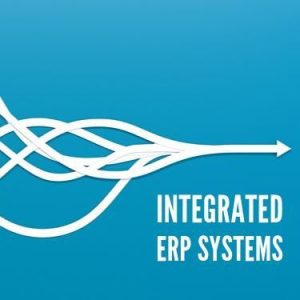 Integrated ERP Systems
Integrated ERP Systems ERP (enterprise resource planning) software is a powerful solution that combines many capabilities found in other systems. It is one of the best choices for a business looking to vastly improve its software solutions and is considered one of the top warehouse management systems. They are also an excellent choice for an enterprise who wants to gain a competitive edge and improve their ROI.
ERP is a specialized system that can offer a solid supply chain execution and scalability, incorporating most of the core applications that enable a 3PL to operate smoothly. Those core application can include, but aren’t limited to:
One key idea to keep in mind is that while integrated ERP systems can offer WMS features, warehouse management features are not a core function of ERP. The solution you choose must provide warehouse management features ahead of time.
ERP integration is considered the end all, be all of warehouse management systems, meaning it comes with a sizeable price tag. At the same time, ERP can replace many other software applications due to its large scope, thereby centralizing your operations into a single interface. ERP may be a good option for your business if you’re unhappy with your current software solutions and want to consolidate them all into one system.
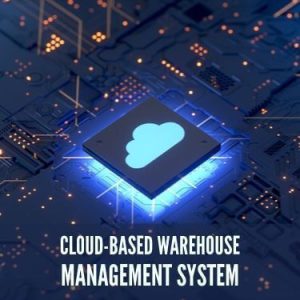 Cloud-Based Warehouse Management System
Cloud-Based Warehouse Management SystemA cloud-based WMS is a web-based, centralized-computing model that employs cloud technology. Cloud-based WMS is often provided using “software-as-a-service” (SaaS) and is noted for its quick scalability and deployment. It can supply the same benefits of a more traditional WMS while also providing faster implementation and lower costs.
A cloud-based WMS is known for having reduced IT maintenance as it is hosted on a separate or private server, depending on specifications from the vendor. A separate or private server leads to higher data security protocols, which is important for businesses that manage high-value inventory or business that simply want more security in their WMS.
As long as the vendor manages the software, customizations can be made to the software when the WMS is in the cloud. However, the amount of customization can vary depending on the software vendor. Customizing the software is essential as it allows the business to grow and make changes to operations and procedures without altering the flow of current practices.
An online warehouse management system is well-suited for business with multi-location needs and offers much in terms of system flexibility and complexity. This type of system can adapt to your business needs and can increase business productivity regardless of operational size, volume or complexity.
Cloud computing also gives users the option to get automatic software updates without extra expense, which contributes to lower costs, and provides technological competitiveness. Details on advantages include:
R+L Global Logistics utilizes Deposco’s Bright Suite Software for our warehousing and logistics needs. Bright Suite is a supply chain management, cloud-based platform with a rich set of integrated applications for inventory, order and the warehouse management process. Core functionalities of the system are:
R+L Global Logistics can be trusted to handle your warehousing and logistics needs. Our logistics team is dedicated to our customers and has the knowledge and experience to take care of your goods without any added stress on your end. We offer a personalized touch and competitive pricing for our services, which include:
Our logistics services are the ideal match for your logistics wants and requirements. Chat, email, or call us at 866-989-3082 to talk to an agent for more information on how we can assist you with your fulfillment warehouse needs.
GET A QUOTE
